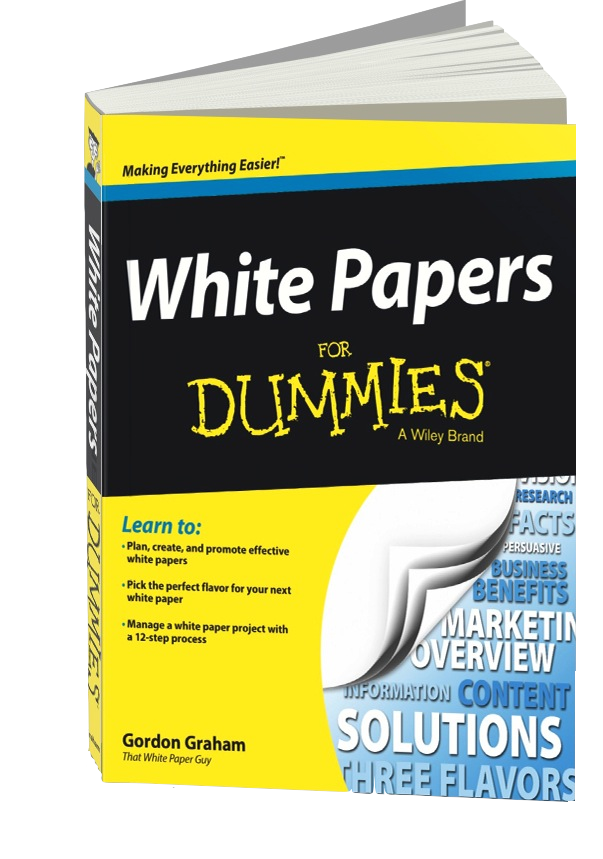
Finding a white paper topic
Every white paper needs an engaging topic.
A good topic can make the difference between a white paper that works well, and one that falls flat.
Let’s take an example to show how this works.
Suppose you need to write a white paper for a vendor of automated parking meters.
These systems use one central parking terminal every block, where motorists can pay using credit or debit cards as well as regular change.
These dramatically cut the time to collect parking fees, and lower any risk of theft.
In effect, they enable cash-strapped cities to raise more money at less expense.
How would you develop a compelling white paper for this vendor?
Sizing up your ideas
Start by going back to your purpose, your audience, and the half-baked ideas you came up with during your planning.
Which of these would accomplish your purpose best? Which would reflect best on your company? Which would be the freshest, most unusual, and most helpful?
One thing to watch out for is picking an idea that’s too big or too small.
You want to focus on something you can cover in 5 to 12 pages, depending on the type of white paper you’re writing.
For example, an idea that’s really too big for one white paper is “How Cities Can Solve Their Budget Crises.” A topic this big would probably call for congressional hearings and a report thousands of pages thick.
The flip side of this topic is one that’s just too small for a white paper, such as “How to Position Automated Parking Meters on City Streets.”
This sounds more like a section from an installation manual or perhaps a blog post—not an idea that justifies putting together a six- to eight-page white paper.
Like Goldilocks, you need to find an idea for your white paper that’s not too big, not too small, but just right.
Giving readers something new
You want to avoid any ideas that have already been covered repeatedly by other sources such as trade magazines, industry associations, and other vendors.
No one gets excited about a white paper on the same topic as one they read two years ago.
So you never want to rehash the same tired material as everyone else.
Even if prospects start reading your paper, if you don’t give them a fresh take on the topic or something new, useful, and educational, they’re going to be disappointed.
Tip: You can check how much has already been published in the same area by Googling a few phrases close to your working topic.
In fact, this is a great way to get some preliminary research and find some initial sources that you may be able to quote.
Don’t wait until you’re in the formal research stage; do some web searches early on, while you’re still shaping your idea.
For example, a workable idea about the automated parking machines might be something like “An Overlooked Source of Revenue for Municipalities”
Or the more jazzed-up title “How to Cut Costs, Add Convenience for Motorists, and Raise More from Street Parking: a Special Report for Municipal CFOs.”
Can you imagine many city managers not interested in a topic like that?
Getting ideas from prospects and clients
If you’re stuck for ideas, you can always turn to a ready source: anyone in your company who talks directly to prospects or clients.
For most companies, that includes people in:
- Sales
- Channel partners
- Customer service
- Technical support
- Marketing
Sit down with a few of these people and ask them some simple questions: What are the prospects and clients you deal with asking about? What are they curious about? What big problems are they grappling with? What do they need help with?
Listen carefully to the answers, and you will hear some rich topics for possible white papers.
What’s more, this conversation doesn’t have to be a one-way street.
Using your customers to test out ideas
If you have a Customer Advisory Board, user group, focus group panel, or any other way of getting hold of some typical prospects or customers, tap them for ideas.
Try out some possible white paper topics to see which one(s) interest them the most.
Or, you can follow relevant posts or do searches on social media like Twitter.
Hang out on any forums, websites, or associations devoted to your target readers. Tune into the conversations among your target readers to learn what’s getting their attention today.
It’s worth spending some extra time to develop an idea that will truly engage your white paper audience.

This article is a brief excerpt from White Papers for Dummies by Gordon Graham, the most comprehensive guide to white papers ever published.
Want to hear whenever there’s a fresh article on this site? Subscribe here to stay in the know on long-form content. From time to time, we’ll also send you word about some great new resource or training. And you can unsubscribe any time.



